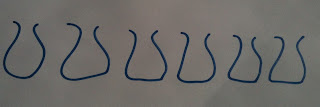A cereal lesson
 Here is an idea that will get you plaudits
from those that like to see Maths in a context or ‘real life’ Maths. It will
give a different pace to your lessons and engage those who prefer a kinesthetic
learning style or experience. Yet again what you do depends upon your imagination and
perhaps appetite.
Here is an idea that will get you plaudits
from those that like to see Maths in a context or ‘real life’ Maths. It will
give a different pace to your lessons and engage those who prefer a kinesthetic
learning style or experience. Yet again what you do depends upon your imagination and
perhaps appetite. Preparation
Eat lots of cereal. Ban toast for breakfast
and force, if you have to, your family to eat packets and packets of cereal.
Keep the boxes. No recycling. You have to supervise the opening of the boxes as
you want them to be in as good a condition as possible.
The Lesson
Organise the class into groups around
tables, 4 to a table seems to work. As the proud owner of numerous cereal
packets distribute one or more to each group. Ask the class what they could
find out about the boxes, give them a minute or two to jot down some ideas then
collect one from each table and record them on the board. It is now up you how
you progress. Sometimes I have collected the ideas from the class, recorded them on the board, and then discussed what we have to find. Alternatively I have collected the ideas but also handed out a worksheet to some classes listing what needs
to be found or what tasks they have to do. Here are some suggestions of what they have to do and record as a group.
Find the height, width and length of the
box.
Find the volume of the box.
Draw a net of the box to scale.
Make an isometric drawing of the box.
Find the surface area.
How much does the it cost per gram? per
100g?
How many boxes could fill the classroom?
What is the ratio of sugar to salt? Does it fit in with Government guidelines?
If it takes 10 days to eat a box how much
salt would I consume in a year?
Further ideas
There are always new and exciting ways to tackle topics. Buy this books and you will be generating even more ideas for yourself 100+ Ideas for Teaching Mathematics (Continuum One Hundreds) .
.
As one reviewer says 'I was looking for a book which would inspire me when planning sessions for teaching mathematics. I browsed a number of books but this one was definitely the best as far as I could see on-line. When it arrived it was even better than I expected. I would certainly recommend this book to anyone who teaches maths! '
As one reviewer says 'I was looking for a book which would inspire me when planning sessions for teaching mathematics. I browsed a number of books but this one was definitely the best as far as I could see on-line. When it arrived it was even better than I expected. I would certainly recommend this book to anyone who teaches maths! '
Extension ideas
Alternatively you could work on the suggestions gathered from the class. The outcome could be report produced by each group or answers in their books from prepared worksheet by you.
You could provide them with boxes of the
same product but in different sizes which is the best value? I am sure you can
think of other ideas. Happy eating. (By the way you have noticed a picture of porridge, I don't eat any other cereal these days, can't think why.)








